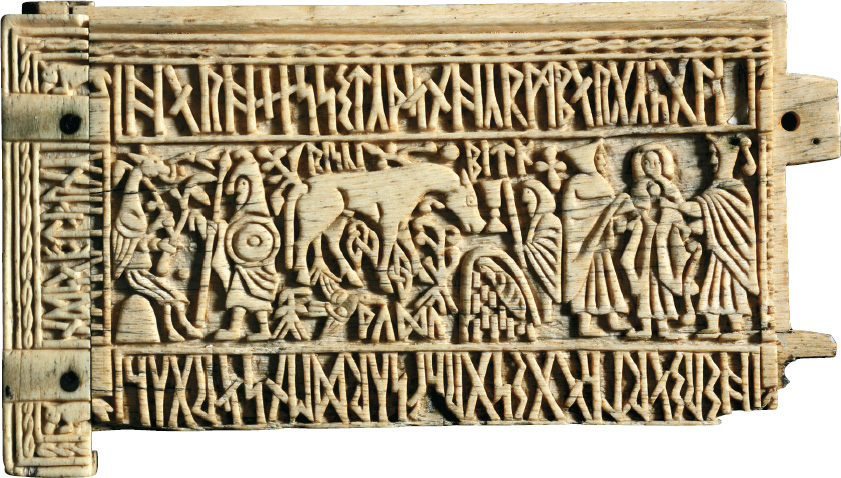A History of Western Society: Printed Page 197
A History of Western Society, Value Edition: Printed Page 202
Barbarian Society
What were the key characteristics of barbarian society?
Augustine’s City of God was written in response to the conquest of Rome by an army of Visigoths, one of the many peoples the Romans — and later historians — labeled “barbarians.” The word barbarian comes from the Greek barbaros, meaning someone who did not speak Greek. (To the Greeks, others seemed to be speaking nonsense syllables; barbar is the Greek equivalent of “blah-blah” or “yada-yada.”) The Greeks used this word to include people such as the Egyptians, whom the Greeks respected. The Romans usually used the Latin version of barbarian to mean the peoples who lived beyond the northeastern boundary of Roman territory, whom they regarded as unruly, savage, and primitive. That value judgment is generally also present when we use “barbarian” in English, but there really is no other word to describe the many different peoples who lived to the north of the Roman Empire. Thus historians of late antiquity use the word barbarian to designate these peoples, who spoke a variety of languages, but had similarities in their basic social, economic, and political structures. Many of these historians find much to admire in barbarian society.

Scholars have been hampered in investigating barbarian society because most groups did not write and thus kept no written records before Christian missionaries introduced writing. Greek and Roman authors did describe barbarian society, but they were not always objective observers, instead using barbarians to highlight what they thought was right or wrong about their own cultures. Thus written records must be combined with archaeological evidence to gain a more accurate picture. In addition, historians are increasingly deciphering and using the barbarians’ own written records that do exist, especially inscriptions carved in stone, bone, and wood and written in the runic alphabet. Runic inscriptions come primarily from Scandinavia and the British Isles. Most are short and limited to names, such as inscriptions on tombstones, but some describe the actions of kings and other powerful individuals, and a few of them mention the activities of more ordinary people.
Barbarians included many different ethnic groups with social and political structures, languages, laws, and beliefs that developed in central and northern Europe over many centuries. Among the largest groups were Celts (whom the Romans called Gauls) and Germans; Germans were further subdivided into various groups, such as Ostrogoths, Visigoths, Burgundians, and Franks. Celt and German are often used as ethnic terms, but they are better understood as linguistic terms, a Celt being a person who spoke a Celtic language, an ancestor of the modern Gaelic or Breton language, and a German one who spoke a Germanic language, an ancestor of modern German, Dutch, Danish, Swedish, and Norwegian. Celts, Germans, and other barbarians brought their customs and traditions with them when they moved southward, and these gradually combined with classical and Christian patterns to form new types of societies.